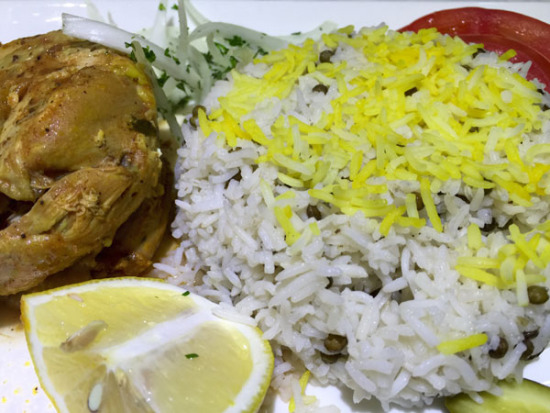
Iranian chefs at Persepolis restaurant in Beijing convert the precious red threads of saffron into golden rice.(Photo provided to China Daily)
Labeled 'mellow yellow' in song, this precious herb boasts the color of the sun and has rich traditions in cuisine, art and medicine.
Fans of exotically flavored saffron may call it a spice to die for, but centuries ago on the ancient Silk Road, such a statement was literally true. Traders risked great hardships to attain the fragrant spice worth more than its weight in gold, and highwaymen of the time had few scruples about killing a few men to get a few saddlebags of the floral treasure. A single Crocus sativus plant bears no more than four flowers, each with three vivid crimson stigmas from which saffron is derived.
"Clearly there is something magical about the Crocus sativus flower," writes medical blogger Sayer Ji on Green Med Info. "If its striking beauty does not immediately cast a spell on its beholder, often it simply takes experiencing the spice to fall into full enchantment with it. While saffron is exceptionally expensive, because it takes approximately 150 flowers to yield just 1,000 mg (0.035 oz) of dry saffron threads, and costs approximately $1,000 a pound, it does not take much to have an effect. Its uniqueness is also illustrated by the fact that it shuns mechanization, requiring of its would-be possessors that it be painstakingly harvested by hand, as no doubt has been done for tens of thousands, if not hundreds of thousands of years.
Today the most expensive grades still come from Iran and surrounding areas that were once part of Persia, such as Afghanistan, and demand for the real thing has kept it moving along centuries-old routes, usually without benefit of camels.
"Lower quality saffron will give you that prized color-that dark yellow ochre color," says Laura Kelley, author of the Silk Road Gourmet, "but it won't give you the aroma or the flavor." She notes that well before the Mongols of the Yuan Dynasty, "people were going all over the region, traveling and trading. The saffron story really is a Buddhist story: It probably came across to China via the Kashmir region. There is documentation of that traffic in Persia as old as the 16th century BCE, and in China there are distinct references from the herbalist Wan Zhen from about 300 BCE." Given the skew of time between such records, she adds, it's likely that there were multiple introductions of the spice into China.
Pleasant as saffron can be on the palate, it's far more than a foodstuff, says art dealer Hassan Rezaei, a friendly expat who has been selling Persian rugs in Beijing for about eight years.
Rezaei is quick to offer any guest some hot Persian tea-a mixture of saffron and black tea, but he's most eager to show saffron at work on his wall, in a magnificent Esfahan rug with sapphire-colored medallions that leap from a background of silken gold. The colors, he says with a big grin, come from natural dyes made from carefully gathered plants: saffron for the blaze of gold, and indigo for the rich blue.
















































